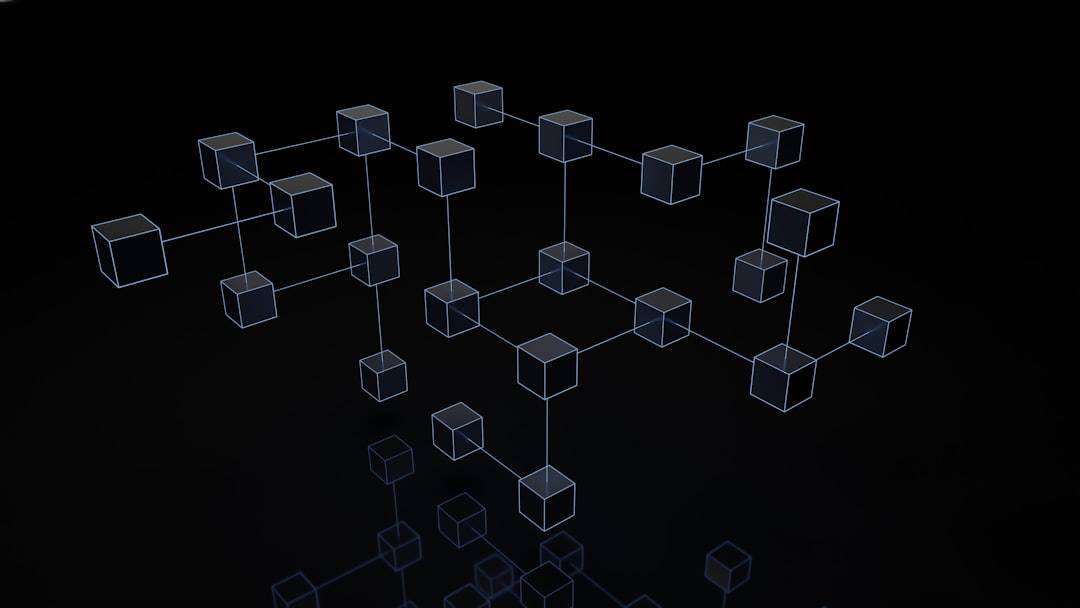In the modern digital era, cybersecurity is critical for organizations of all sizes. The increasing dependence on technology and internet connectivity has made businesses more susceptible to cyberattacks and data breaches. The repercussions of a cybersecurity incident can be severe, potentially resulting in financial losses, reputational damage, and legal consequences.
As such, prioritizing cybersecurity is essential for businesses to safeguard sensitive information and maintain customer trust. Cybersecurity extends beyond data protection; it encompasses preserving a business’s overall stability and operational continuity. A successful cyberattack can disrupt operations, leading to downtime and reduced productivity.
This can significantly impact a company’s financial performance and its ability to meet customer needs. Furthermore, organizations that neglect cybersecurity may face regulatory fines and penalties for failing to protect sensitive data. Consequently, investing in robust cybersecurity measures is crucial for the long-term viability and success of any business.
Key Takeaways
- Cyber security is crucial for businesses to protect sensitive data and maintain trust with customers.
- Cyber attacks and cyberwar pose significant threats to businesses, requiring proactive measures to prevent and mitigate potential damage.
- Implementing artificial intelligence in cyber security can enhance threat detection and response capabilities.
- Best practices for securing your business include regular software updates, strong password policies, and employee training.
- Training employees in cyber security is essential for creating a culture of awareness and accountability within the organization.
- Encryption plays a vital role in protecting business data from unauthorized access and breaches.
- Developing a comprehensive cyber security plan is necessary to identify potential risks and establish protocols for incident response and recovery.
Understanding the Threats: Cyber Attacks and Cyberwar
Phishing and Malware Attacks
One common type of cyber attack is phishing, where attackers use deceptive emails or websites to trick individuals into providing sensitive information such as login credentials or financial details. Another prevalent threat is malware, which includes viruses, ransomware, and spyware that can infect a business’s systems and steal or encrypt sensitive data.
Denial-of-Service (DoS) Attacks
Additionally, denial-of-service (DoS) attacks can overwhelm a business’s network, causing it to become inaccessible to legitimate users.
The Emerging Threat of Cyberwar
In recent years, the threat of cyberwar has also emerged as a major concern for businesses. Cyberwar involves nation-states or state-sponsored groups using cyber attacks to disrupt or damage the infrastructure of other countries or businesses. These attacks can target critical systems such as power grids, financial institutions, and government agencies, posing a significant threat to national security and economic stability. As such, businesses must be aware of the potential for cyberwar and take proactive measures to protect themselves from such threats.
Implementing Artificial Intelligence in Cyber Security

Artificial intelligence (AI) has become an invaluable tool in the field of cyber security, offering businesses advanced capabilities for threat detection and response. AI-powered systems can analyze vast amounts of data in real-time to identify patterns and anomalies that may indicate a potential cyber attack. This enables businesses to detect and respond to threats more quickly and effectively than traditional methods.
One of the key advantages of AI in Cyber Security is its ability to adapt and learn from new threats. Machine learning algorithms can continuously improve their ability to identify and mitigate cyber threats based on new information and evolving attack techniques. This proactive approach to cyber security is essential in today’s rapidly changing threat landscape, where attackers are constantly developing new tactics to bypass traditional security measures.
Best Practices for Securing Your Business
| Best Practices for Securing Your Business |
|---|
| Regularly update and patch all software and systems |
| Implement strong password policies and multi-factor authentication |
| Train employees on cybersecurity awareness and best practices |
| Encrypt sensitive data and use secure communication channels |
| Regularly backup data and test disaster recovery plans |
| Implement access controls and monitor network activity |
Securing a business against cyber threats requires a multi-faceted approach that encompasses various best practices. One fundamental aspect of cyber security is implementing strong access controls to limit the exposure of sensitive data to unauthorized individuals. This includes using strong passwords, multi-factor authentication, and role-based access controls to ensure that only authorized personnel can access critical systems and information.
Regularly updating and patching software and systems is also crucial for maintaining a secure business environment. Software vendors frequently release updates and patches to address newly discovered vulnerabilities, and failing to apply these updates promptly can leave a business vulnerable to exploitation by attackers. Additionally, businesses should implement robust network security measures such as firewalls, intrusion detection systems, and encryption to protect their data from unauthorized access.
Training Your Employees in Cyber Security
Employees are often the weakest link in a business’s cyber security defenses, as they can inadvertently fall victim to phishing attacks or other social engineering tactics used by cyber criminals. Therefore, providing comprehensive training in cyber security best practices is essential for empowering employees to recognize and respond to potential threats effectively. Training should cover topics such as identifying phishing emails, creating strong passwords, and recognizing the signs of malware or other malicious activity.
Employees should also be educated on the importance of data privacy and the potential consequences of failing to adhere to cyber security policies. By investing in ongoing training and awareness programs, businesses can significantly reduce the risk of human error leading to a successful cyber attack.
The Role of Encryption in Protecting Your Business
Encryption plays a critical role in protecting a business’s sensitive data from unauthorized access. By encrypting data at rest and in transit, businesses can ensure that even if attackers gain access to their systems, they will be unable to read or use the encrypted information without the appropriate decryption keys. Implementing strong encryption protocols for communication channels, databases, and storage systems is essential for maintaining the confidentiality and integrity of sensitive information.
Additionally, businesses should consider using encryption for mobile devices and removable media to prevent data loss in the event of theft or loss.
Developing a Cyber Security Plan for Your Business
Developing a comprehensive cyber security plan is essential for ensuring that a business is adequately prepared to prevent, detect, and respond to cyber threats effectively. A cyber security plan should outline the specific measures and protocols that will be implemented to protect the business’s systems and data from potential attacks. Key components of a cyber security plan include conducting regular risk assessments to identify potential vulnerabilities, establishing incident response procedures for addressing security breaches, and defining clear roles and responsibilities for personnel involved in cyber security operations.
Additionally, businesses should consider implementing a robust backup and recovery strategy to ensure that critical data can be restored in the event of a successful cyber attack. In conclusion, prioritizing cyber security is essential for businesses looking to protect their sensitive information, maintain operational stability, and uphold the trust of their customers. By understanding the various threats posed by cyber attacks and cyberwar, implementing advanced technologies such as artificial intelligence, and adhering to best practices for securing their systems, businesses can significantly reduce their risk of falling victim to cyber threats.
Furthermore, investing in employee training, encryption measures, and developing a comprehensive cyber security plan are crucial steps in building a resilient defense against potential cyber attacks. Ultimately, by taking proactive measures to strengthen their cyber security posture, businesses can mitigate the potential impact of cyber threats and safeguard their long-term success.
If you are interested in learning more about the intersection of cyber security and virtual economies, you may want to check out this article on metaverse platforms and ecosystems, virtual economies, and digital assets. The article discusses the potential security risks and challenges that come with the use of digital assets in virtual environments. It also explores the role of blockchain technology in enhancing security within the metaverse. You can read the full article here.
FAQs
What is Cyber Security?
Cyber security refers to the practice of protecting systems, networks, and programs from digital attacks. These attacks are aimed at accessing, changing, or destroying sensitive information; extorting money from users; or interrupting normal business processes.
Why is Cyber Security important?
Cyber security is important because it encompasses everything that pertains to protecting our sensitive data, personally identifiable information (PII), protected health information (PHI), intellectual property, data, and governmental and industry information systems from theft and damage attempted by criminals and adversaries.
What are the common types of cyber attacks?
Common types of cyber attacks include malware, phishing, ransomware, denial-of-service (DoS) attacks, and man-in-the-middle attacks. These attacks can cause significant damage to individuals, organizations, and governments.
How can individuals protect themselves from cyber attacks?
Individuals can protect themselves from cyber attacks by using strong, unique passwords, enabling two-factor authentication, keeping software and systems updated, being cautious of suspicious emails and links, and using reputable antivirus software.
How can organizations improve their cyber security measures?
Organizations can improve their cyber security measures by implementing a comprehensive security policy, conducting regular security training for employees, performing regular security audits, and investing in advanced security technologies such as firewalls, intrusion detection systems, and encryption.












Leave a Reply